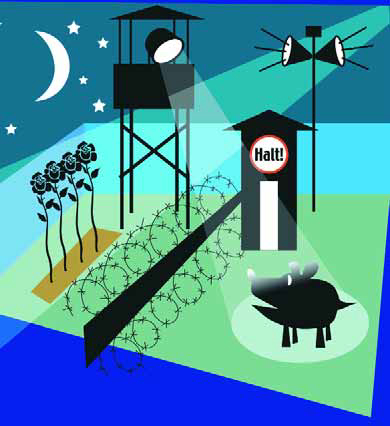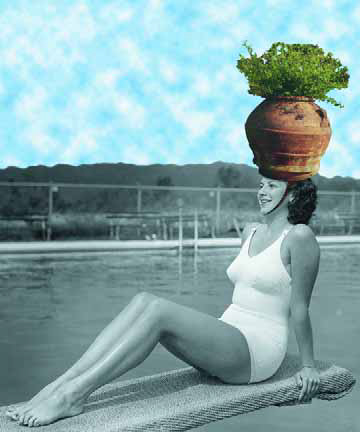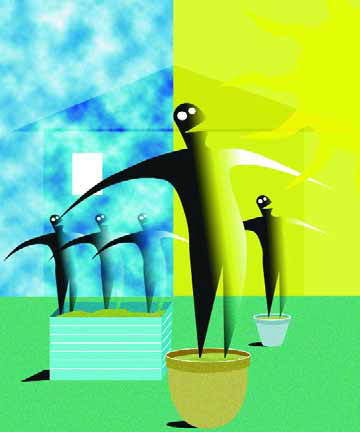Landscape, Plants, Hardscape & Decks
When you think of palms, it's easy to conjure visions of Hawaii or some other tropical paradise. These graceful plants evoke a sense of serenity and thoughts of calm tropical breezes - and maybe even memories of a cool mai tai in your hand. Unfortunately for lots of us, palms thrive only in warmer climates. In the United States, for example, they generally do not grow north of the 33rd parallel, which stretches roughly from Northern California on the West Coast to South Carolina on the East Coast. This geographic factor is the main reason I haven't discussed palms before in this column. After three years, however, I figure I'm
Last month, we dug into the use of containers and accessories in garden designs and discussed ways in which they add interest, depth and dimension to almost any setting. This time, we'll get more specific and look at ways in which the same containers and accessories can be adapted to fit a particular environment and used with various design styles. To do so, let's start with long, rectangular pools (15 by 40 feet), place them in the yards of clients with different desires and see how we can blend planters into several popular styles: [ ] Contemporary: If you have a very contemporary setting with no planting beds, containers can be used to
Whether you choose to replicate old stone structures or borrow ideas and transplant them into contemporary designs, there is certainly a treasure trove of design concepts to be found in the masterworks of those who've gone before us. Indeed, stone has been the raw material of choice for many of the world's greatest architects, landscapers and watershapers, each of whom has relied on stone and its timelessness in fashioning works of beauty. In the first two articles in this series, we toured
We've spent a lot of time in these columns talking about ways of adding dimension and interest to gardens by using different planting styles and arrangements and by varying color, texture, size, quantity and other planted features of the design. As yet, however, we haven't spent any time at all on one of the easiest and potentially most interesting ways of giving a design a unique character - one that virtually forces visitors to remember your garden. It's all about containers and accessories. As simple as it seems, adding containers and other accessories - anything from simple terra cotta pots or stone benches to elaborately custom-built planter boxes or beautifully detailed garden statuary - can add marks of
Imagine your clients in this scene: It's a warm, summer evening, dinner for two on the patio is almost ready, the waterfall is on, and candlelight is reflecting on the surface of the pond. But the salad isn't quite complete, so this evening's chef steps into the yard, clips some chives from a clump near the water's edge and adds a finishing touch to the composition. Later, they pick a few plums and apricots for dessert, relaxed and about as happy as they could be in their backyard. Though the setting is delightful, it's the edible plants that complete the experience. And as was mentioned last time, with more and more people wanting
It's the little things that often make the biggest difference in creating beautiful spaces within gardens or near watershapes. A well-articulated retaining wall here, a clever treatment of a stone footpath there or the perfect placement of a stone stairway can, at various points, lend variety, balance and even a sense of antiquity to the work. In the first installment of this series of articles on classic uses of stone in gardens and watershapes, we began with an overview of stones set among plantings and used as simple structures in some of the world's most beautiful
More and more of my clients are interested in including edible plants in their gardens. They're into cooking, great food, fine wine and entertaining, and they appreciate the special flavors that come when they grow and harvest their own edibles. It's incredibly satisfying to walk out into one's own garden and pick fruits or vegetables or herbs. Not only do these edibles taste better than store-bought produce, but any gardener can be reasonably sure that the foods they grow are free of pesticides and other undesirable contaminants. No matter what
The ancient Celts transported huge slabs of stone over long distances to create religious circles at Stonehenge and Avebury. The Romans used stone to build their aqueducts. From the pyramids of Egypt to the Acropolis in Athens, from the Great Wall of China to the great castles of Europe, stone has been the raw material of choice for our greatest and most enduring structures. Through the ages, stone has been a well-used material because it is both durable and readily available. It's hard to find a town in Europe without walls constructed of local stone, and all you need do is drive through
Summer is arriving, and those 90-degree-plus days are coming with it. Your clients are thrilled to have their watershapes to cool off in, but they can't spend all their time in the water! I've discussed shade structures and shade trees before, and it's an important feature to discuss with any clients whose yard you are designing. But there's more to shade than what you do overhead, and you need to discuss what you'll be planting in those shaded areas. There are two problems here. For the most part, people don't know what to plant in the shade - nor do they






















